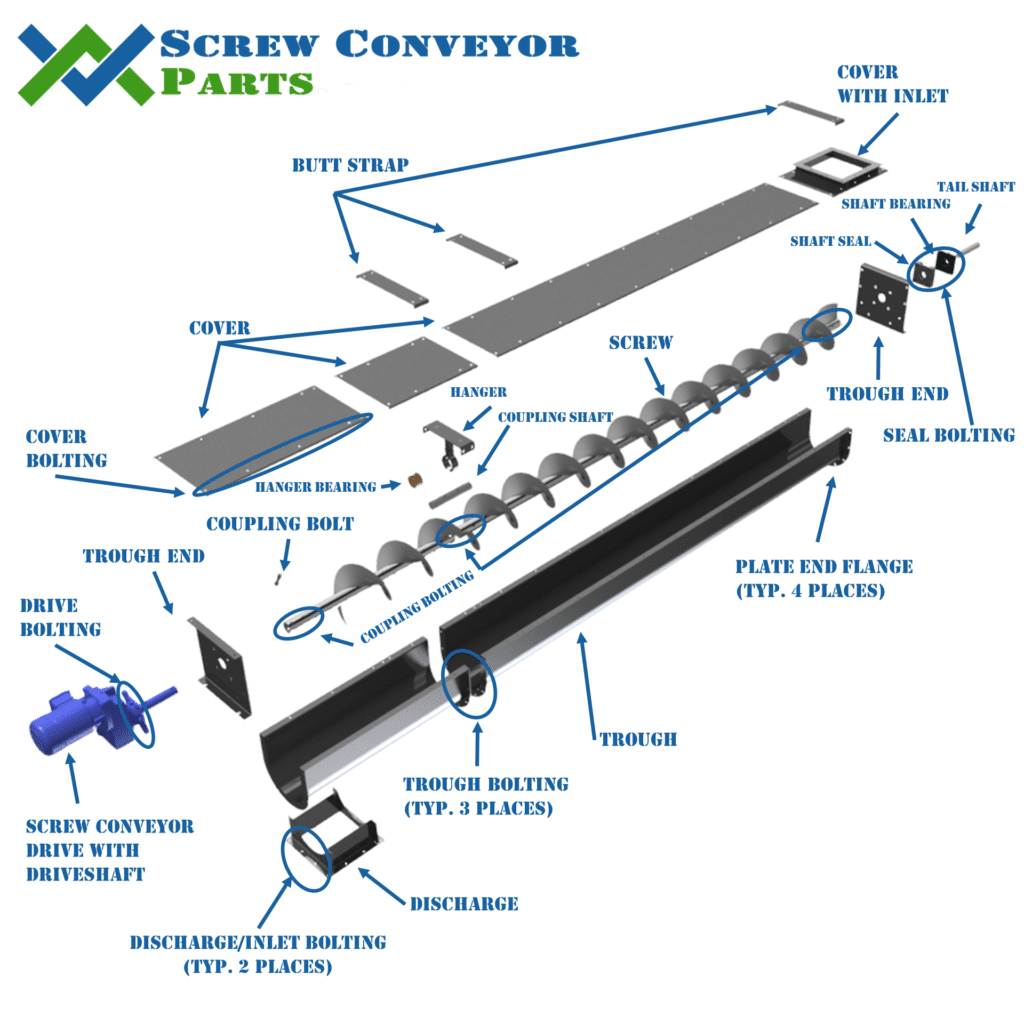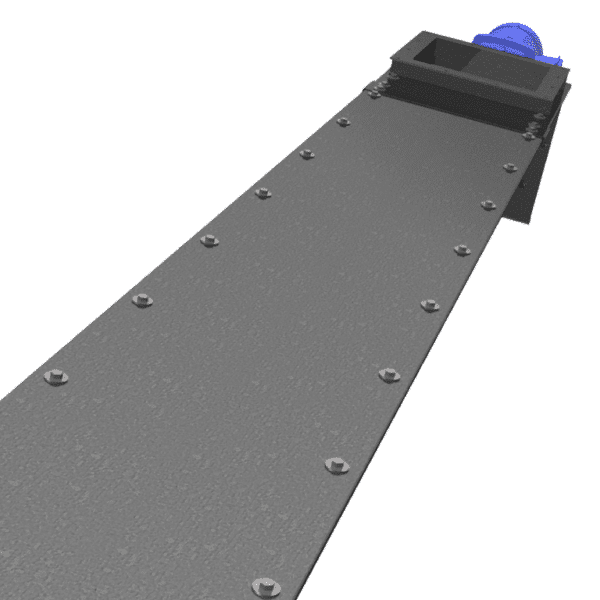The screw conveyor cover is used to enclose a u-trough, flared or rectangular trough screw conveyor. The cover serves as a dual purpose safety barrier by protecting the operator from the rotating screw and from the potentially harmful and explosive dust in the screw conveyor. The cover is usually made of gauge steel bolted to the top flange of the trough. The cover can be easily custom configured to allow for standard and custom inlets along with inspection ports and various sensing devices. Like many other screw conveyor parts, there are a large variety of configurations, but the most commonly used is called a flanged cover. (Click here for links to flanged covers ) Common thicknesses are 14GA, but thicker materials are not uncommon when welding inlets to the cover or containing pressures.
Screw Conveyor Cover Length
Covers are manufactured in a variety of configurations for different attachment applications. Standard lengths for covers mimic that of troughs; 10ft lg up to a 10″ diameter conveyor and 12ft lg for larger diameters. It is common practice for conveyor manufacturers to simply cut down a standard length cover to a special length instead of making a new one. This is mainly motivated by the costs and time savings of using the available stock items. This means it is not uncommon to see a 9′-3″ lg cover cost more than a standard 10′ lg cover due to the included cover material plus labor to cut it down.
Screw Conveyor Cover Bolting
There are various ways to attach the cover to the trough, but the most common and safest is bolting (Bolts) the covers down while using some type of sponge gasket to seal. The standard cover bolting for most manufacturers on assembled conveyors is a 24″ bolt centers on 2-sides only with a sponge neoprene gasket (Gaskets). This is sufficient for non-dusting products but a better system is required for most applications. A better system is increasing the number of bolts by using 12″ bolt centers on 4-sides of the cover with the same sponge neoprene gasket. For many low pressure systems (<1 psi) it is not uncommon to see 6″ bolts centers on 4-sides. For covers required to hold over 1psi, a specially designed cover and sealing system is often required. It should be noted that unless mounted to the trough, covers do not come with bolt holes in them. These are to be drilled to match the trough in the field.
Screw Conveyor Cover Layout
The typical configuration for screw conveyor covers is as seen in the diagram below with a short cover with attached inlet (Inlet Cover) followed by full length covers with short covers over the hangers. The purpose of the short cover with the inlet is so the maintenance crew does not have to disconnect the inlet to remove the main portion of covers. The purpose of the short cover over the hanger is to allow access to inspect and maintain the hanger bearing without having to remove the balance of the covers. Buttstraps (Buttstraps) are used to seal the cover joints. Batten bars can also used to seal the cover joints, too.
Selecting the right screw conveyor cover type, configuration, thickness, bolting and sealing options can seem overwhelming, but remembering there are a few common options which cover most applications will help ease the buying process.


